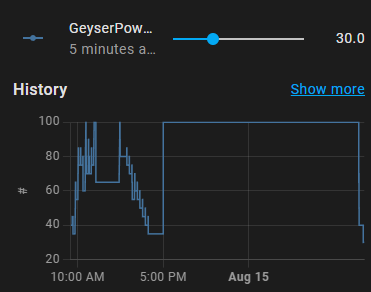Despite the fuss made of the invention of the transistor the SCR became (and still is) a reliable and cheap switching device for power circuits. The improvements made to them were marginal so no need to buy the latest ones.
When I was a kid I had the good fortune to see a mercury arc rectifier in operation. It made such an impression on me that my career path was decided then and there ![]()
That is not quite true - an SCR, or thyristor is just 2 back to back BJTs, so the drop is double what 1 BJT would be. Now in pretty much all these devices they use triacs, which are essentially 2 thyristors anti-parallel. A thyristor will only control one half of the sine, that is why you use a triac so that you can control both halves.
I stand corrected then ![]() I was always impressed with just how much you can switch with it, using only a small heatsink, but I obviously got something wrong in my assumptions.
I was always impressed with just how much you can switch with it, using only a small heatsink, but I obviously got something wrong in my assumptions.
Not quite. Basically, 1VBE drop (~0.7V) + 1 VCEsat (~0.2V) - so around 0.9V for typical devices. The big win is that turn on is a feedback mechanism (very fast) and turn off is a zero crossing (zero energy), so switching losses are very low. So you only ever really have to worry about the forward drop loss.
Fair point.
Not for a device that will switch 3kW…
So the new SCR seems to be working a treat. The design is definatelly different and the “timing” component vary, for one i know the POT is a different value. This means I have better “resolution” and control over the power draw. With the old unit, on the 2KW element, below 1KW of power draw the power would no longer drop in a uniform way that I could run a single automation to reduce power draw, right now I just turn the POT back 10%. With the new unit resolution down low seems much better and I can run the geyser as low as 700W.
Some pictures from yesterday, Geyeser got to 90C and was kept “warm”

Only to be destroyed by my wifes morning shower, barely even notice my shower.
And a picture noting the “power level” during the day

That’s awsome, really a good way to bank available power.
That seems very high? I know solar geysers can get “quite hot”, but isn’t there a very nervous safety valve at that temperature? My electric thermostat only goes to 70, but was wondering how much heat the cylinder itself could take.
My geyser was replaced a few years before I purchased the property and the tank is “solar geyser compatible” I read that as it can take the heat, I stop at “90” as that’s where the mechanical cut out of the geyserwise thermostat is anyway. Yes, I should install a scalding valve to keep that temp from coming out the tap, its on the “to do list” if the geyser starts leaking or bursts, id be just too happy honestly as I would really like to upgrade to a bigger unit.
This was the comment from Kwikot’s engineers when I was asking about my system:
The geysers TP safety valve will start discharging at around 92 deg C. This is as a safety position and the TP should be replaced after 2 discharges.
This was for a standard geyser, but I believe these safety valves are present on the solar geysers too (although those may be reusable).
In the end, I opted for an 80C maximum. I may push it up to 85, as I generally have excess production and mid winter heat losses are too high.
In this case I should replace my TP valve, I had it overflow twice on initial setup of the system when my Thermostat calibration was slightly off.
So depending on where the thermal probe sit, this is just measuring the “cold” part of the geyser. You should technically still have quite a bit of warm water left (depending on how low the shower was for! ![]() ).
).
I have extensive experience on the matter, and I can tell you, it does not matter how warm the geyser is prior to my wife’s shower, when she’s done, its cold. She takes 30C out the geyser no problem. Thermostat sits closer to the bottom than the top, so it does respond to the cold water quicker and doesn’t “know” of the hot water at the top. But I can tell you once it dips below 25C odd its game over.
Ive wondered how geyser temp would be affected if you were to circulate the water from top to bottom, same principal as a heat pump except no new heat coming in
BTW. This was when I was discussing acceptable operating temperatures. According to them, the TP safety valve is the lowest limit temperature. But legally they can not approve a temperature higher than 75C. So anything between 75C and 92C is ‘technically usable’ but not approved.
